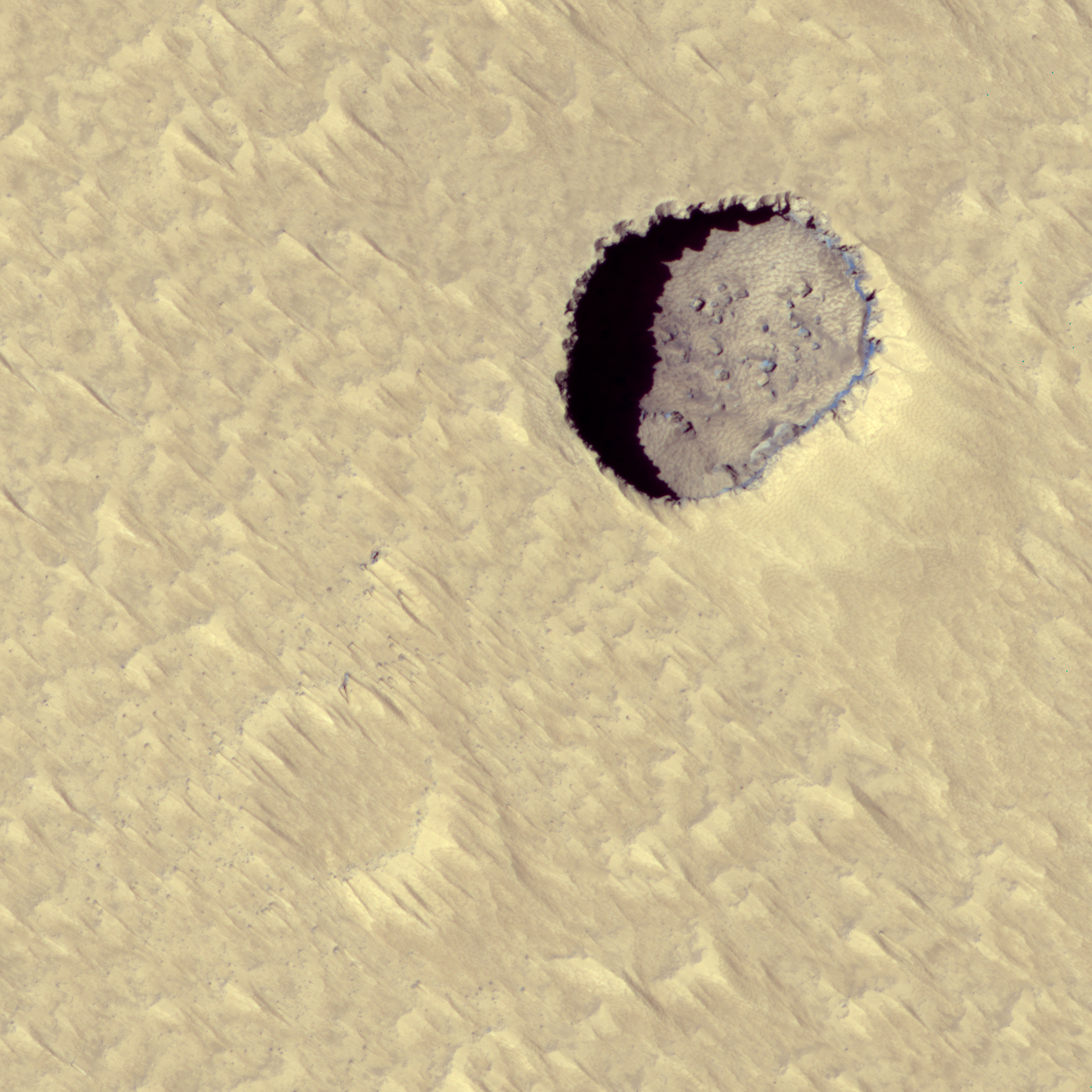Sand tails

Curiosity, recovering from the Bagnold dunes campaign
May 1, 2017
Is it an old fossil barchan dune?
May 22, 2017
Categories

A Piece of Mars: Up on the tallest volcanoes, the wind screams downhill at night. This 500x500m (0.31×0.31 mi) scene shows how dust is carried downhill, but only that which is trapped behind boulders and crater rims sticks around. The big hole may be a window into a lava tube. Formation of the window itself is one of the younger events to have formed this landscape, as the screaming dust hasn’t fully filled in the hole (although it has begun the process and formed a tailing wind streak). (HiRISE ESP_050089_1660, NASA/JPL/Univ. of Arizona)




2 Comments
Great blog Ms Fenton. I’ve always been fascinated by Mars and other planets. One dumb question (if it’s OK). When we talk about frost, seasonal changes, etc on Mars is that always CO2 (dry ice?) Would it be possible to detect current water ice from orbit if it exists? I have always wondered about deep craters on Mars and the polar areas if there is H2o in them. Thanks!
“Ice” on Mars refers to either CO2 or H2O. The northern residual polar cap is made mostly of H2O ice, and the south pole is a mix of both ices. The seasonal frost is mostly CO2, simply because there’s more of it around in the atmosphere to condense out. But there’s H2O ice as well in much smaller amounts – we know this because of both temperature differences (we see ice where temps are too high to allow CO2 frost to persist, so it must be H2O), and because of data from spectral imagers (OMEGA and CRISM) that can differentiate between the two different ices.